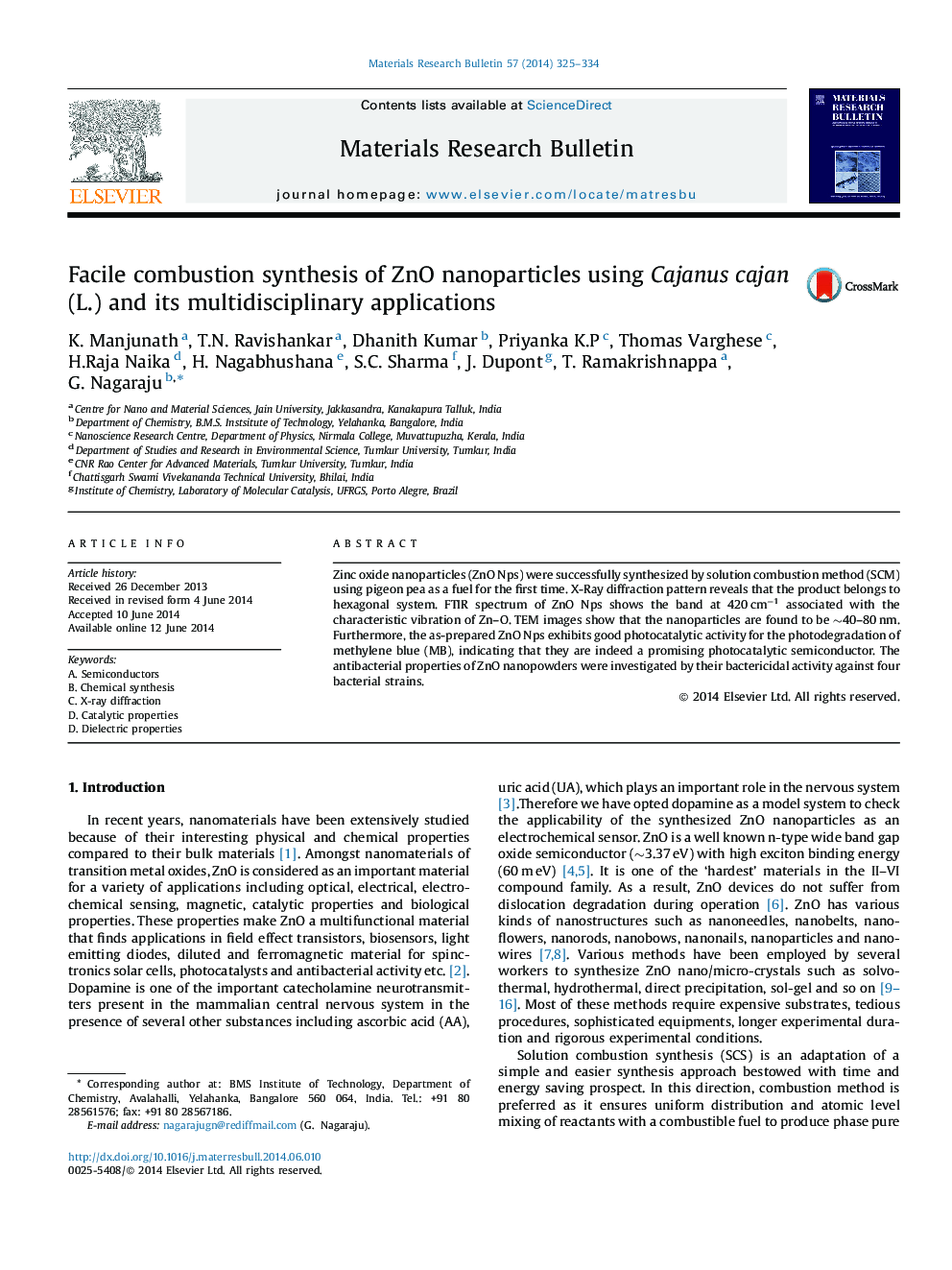| Article ID | Journal | Published Year | Pages | File Type |
|---|---|---|---|---|
| 1488285 | Materials Research Bulletin | 2014 | 10 Pages |
•ZnO Nps were synthesized via combustion method using pigeon pea as a fuel.•The structure of the product was confirmed by XRD technique.•The morphology was confirmed by SEM and TEM images.•The as-prepared product shown good photocatalytic activity, dielectric property.•It has also shown good antibacterial and electrochemical properties.
Zinc oxide nanoparticles (ZnO Nps) were successfully synthesized by solution combustion method (SCM) using pigeon pea as a fuel for the first time. X-Ray diffraction pattern reveals that the product belongs to hexagonal system. FTIR spectrum of ZnO Nps shows the band at 420 cm−1 associated with the characteristic vibration of Zn–O. TEM images show that the nanoparticles are found to be ∼40–80 nm. Furthermore, the as-prepared ZnO Nps exhibits good photocatalytic activity for the photodegradation of methylene blue (MB), indicating that they are indeed a promising photocatalytic semiconductor. The antibacterial properties of ZnO nanopowders were investigated by their bactericidal activity against four bacterial strains.
Graphical abstractFacile combustion synthesis of ZnO nanoparticles using Cajanuscajan (L.) and its multidisciplinary applications.Zinc oxide nanoparticles were successfully synthesized by solution combustion method (SCM) using pigeon pea as a combustible fuel for the first time. The as-prepared product shows good photocatalytic, dielectric, antibacterial, electrochemical properties.Figure optionsDownload full-size imageDownload as PowerPoint slide
